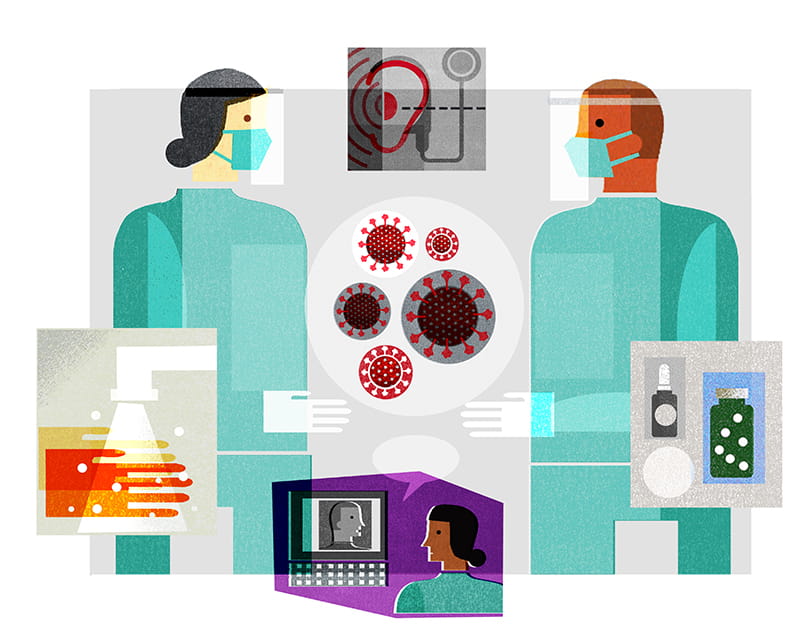
2020 Annual Report

The Department of Otolaryngology – Head and Neck Surgery in the Ohio State College of Medicine jumped 11 spots in the 2021 Blue Ridge rankings to No. 11 among all ear, nose and throat (ENT) programs in the nation.
The Blue Ridge Institute for Medical Research monitors National Institutes of Health (NIH) and other institutional funding to U.S. medical schools and their departments. Its annual national ranking is considered the gold standard for medical school research metrics.
“It’s pretty significant for us,” says Shuman He, MD, PhD, vice chair of Research in the Department of Otolaryngology – Head and Neck Surgery. “A better ranking is one measure of our research excellence.”
The department ranked No. 22 in 2020 and is striving to break into the top 10, says James Rocco, MD, PhD, chair of the department. Researchers and physicians have been working to boost NIH research funding since 2014, when the department received a total of $800,000. That figure grew to $2.5 million in 2017 and stands at $5.5 million today. The current research portfolio includes:
Grant writing is a mixture of process and a sales pitch, Dr. Rocco says. Most researchers and physicians early in their careers need training in how to do it right. To do that, the department created its own internal grant review committee so that seasoned faculty and successful grant writers can provide feedback and make grant applications as strong as possible before they’re submitted.
“I remember after I got my first grants approved, I finally got myself on an NIH grant review session, and I learned that we were writing these all wrong,” Dr. Rocco says. “We are trying to bring some of that elusive knowledge and understanding to the table for first-time grant applicants.”
The grant review committee helps faculty and researchers avoid common rookie mistakes, such as not having a solid statistical plan or not extrapolating in the literature the significance of what they want to study.
“Rather than learning by failure and having your grant application not be discussed, we are trying to give people a few rounds of internal feedback first,” Dr. Rocco says. “It’s working and we’ve had a much higher percentage of grants get discussed, scored and even funded.”
It’s critical to get a grant application discussed, even if not funded, as discussed grants provide much more detailed feedback to the grant applicant that can be utilized to generate a stronger subsequent application.
The department also incentivizes grant writing work by providing academic relative value units, known as RVUs. This allows researchers and clinical scientists to earn bonuses, even if the time they spend on an R01 grant doesn’t immediately lead to NIH funding.
“We apply the apprenticeship model in a more organized way,” Dr. Rocco says. “We have this very formal process where people submit their grant, and we make them do more work, whether it needs more data or statistics or to be developed in another way.”
The department also now provides funding to allow outside reviewers who are experts on a topic to assess grant applications and offer a formal critique.
The higher Blue Ridge ranking helps the department recruit and retain faculty and postdoctoral students, including those who bring NIH funding with them. Two researchers recently joined the department, and Dr. He says they’re working to recruit more.
In total, the department includes 15 faculty researchers. Among those, nine hold PhDs and six are clinician-scientists with MDs and PhDs.
Current research includes:
The team is very collegial and supportive of one another, Dr. He says. “We have a really nice research circle, and our internal grant review process bolsters that.”